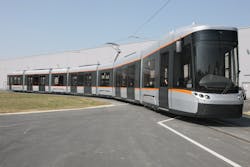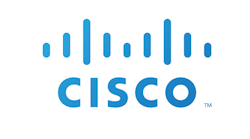From New York to Tokyo, cities around the world are piloting connected transportation technologies that make their streets safer, mass transit systems smarter and entire cities more sustainable — improving citizens’ everyday lives. While many cities are still in the pilot phases of their connected transportation projects, a handful have already implemented these technologies and are experiencing significant results. One city miles ahead of the rest is Linz, Austria.
The third-largest city in Austria and a popular tourist spot, Linz started its connected transportation journey three years ago, with the goal of positioning itself as the country’s most innovative city. Under the guidance of Linz AG, the city’s technical-services arm, working together with Cisco, Linz created a vision for a connected transportation system enabled by the power of the Internet of Things (IoT).
The initiative began with upgrading Linz’s analog systems to digital and serial connections to fiber for a faster, more scalable network. Then, Linz and Cisco added Ethernet video security monitoring, voice over IP (VoIP), wireless network controllers and access points on trams and in stations. Data from the various connected components are sent to a centralized control center, where transportation officials can aggregate, access and view vital, real-time information, such as tram arrival times and when ticketing machines require maintenance.
New Technologies, New Connections
With these technology upgrades, Linz introduced several new features and capabilities to its mass transit system. First, all trams, buses and the city’s 12 stations are now connected using video security solutions that work intelligently with Linz AG’s network and cybersecurity solutions to protect the network, devices, applications, users and data. The data from the video security cameras is sent in real-time to the centralized control center, where transportation personnel can react immediately in the event of an emergency. This is an important aspect of the project, as safety and security were priorities from the beginning.
Second, digital displays at the tram stations show real-time data on where trams are located and exactly how long until they arrive at a particular stop. For instance, if a tram is delayed due to an accident at an intersection, the digital displays tell riders what has happened, where the incident occurred and how long until the tram arrives.
Third, more than 400 ticketing machines throughout the city are connected to the network and managed from the control center, where workers can update the user interface on any or all ticketing machines across the city whenever needed. The ticketing machines notify staff if there is a malfunction, tampering or when preventative maintenance is needed. The results are reduced machine downtime, fewer repairs, lower maintenance costs, and happy travelers (no one likes to encounter a broken ticketing machine when they are in a hurry).
Today, all 60 of the light-rail trams and 180 buses in the city of Linz’s fleet are connected to the centralized transportation control center and also provide free public Wi-Fi. Every month, there are an average of 101,600 logins from more than 24,300 unique users on the public Wi-Fi, generating an average of 4,100 GB of traffic. However, the most significant, long-term benefits of Linz’s connected transportation system come from analyzing the data it collects.
Data Analytics Drive Energy Savings
From each tram and bus, 500 different data sets are extracted (mostly telematics data) and transmitted to the centralized control center where analytics help in decision-making. This includes real-time data on the health of the equipment, the trams themselves and the rail lines (such as the temperature of the trams, if the electricity powering the tram is stable, and more).
Most notably, Linz AG analyzed the data collected on braking and acceleration behavior of each tram driver and discovered how it could optimize driving. With insights from this data, Linz AG provided instructional courses to teach drivers how to brake and accelerate more efficiently. Because 12 percent of the electricity that powers the light-rail trams comes from fossil fuels, Linz AG estimates that it has reduced CO2 emissions by 490 tons since the initial pilot began — simply by improving driver behavior.
What’s Next for Linz?
The success of Linz’s connected transportation project has inspired the city to become not only the most innovative city in Austria, but also the region. Linz now knows that it is capable of transforming itself and improving its citizens’ lives by using digital, IoT-powered technologies.
Because of the success of this initiative, Linz AG and Cisco are planning to roll out several additional “smart city” projects. One future project involves a smart parking system that allows people to use their smartphones to pinpoint open parking spaces and reserve them in advance. They also plan to mount IoT-enabled video cameras on light poles around the city that can verify if drivers have already paid for their parking space. If someone does not pay, the system will automatically bill them based on their license plate number and registration information.
Similarly, Linz is planning to introduce IoT-enabled sensors on street lights. With the help of motion sensors, the lights can automatically adapt and become brighter as pedestrians, cyclists or cars approach, or as weather conditions change. The lights will also send real-time data to the control center so that officials can obtain immediate insights into weather and traffic, as well as analyze the data to identify opportunities to improve safety and traffic flow.
Finally, Linz AG is creating a smartphone app that will provide tram and bus riders with easier login for the free public Wi-Fi that is provided on the trams and buses. The app will also give the public access to much of the data that the transportation systems are generating. For example, citizens will be able to see a running tracker of how many tons of CO2 emissions have been saved in their city to date.
While Linz may not be the biggest city, it is certainly one of the most innovative. As other regions look to catch up in the race to digitally transform their transportation systems, Linz serves as a shining example of how IoT technologies can streamline the way we travel, make us safer and even save energy for a more sustainable world.
Barry Einsig is a global transportation executive with Cisco and can be reached via Twitter at @BarryEinsig and at LinkedIn.




